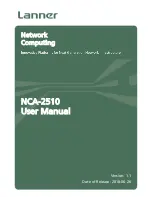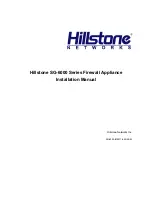
1-10
Cisco Catalyst Blade Switch 3120 for HP Software Configuration Guide
OL-12247-01
Chapter 1 Overview
Features
–
IEEE 802.1x inaccessible authentication bypass.
For information about configuring this feature, see the
“Configuring the Inaccessible
Authentication Bypass Feature” section on page 9-37
.
–
Authentication, authorization, and accounting (AAA) down policy for a NAC Layer 2 IP
validation of a host if the AAA server is not available when the posture validation occurs.
For information about this feature, see the Network Admission Control Software Configuration
Guide.
•
, a proprietary feature for managing network security through a TACACS server
•
RADIUS for verifying the identity of, granting access to, and tracking the actions of remote users
through AAA services
•
Kerberos security system to authenticate requests for network resources by using a trusted third
party (requires the cryptographic universal software image)
•
Secure Socket Layer (SSL) Version 3.0 support for the HTTP 1.1 server authentication, encryption,
and message integrity and HTTP client authentication to allow secure HTTP communications
(requires the cryptographic universal software image)
QoS and CoS Features
These are the QoS and CoS features:
•
Automatic QoS (auto-QoS) to simplify the deployment of existing QoS features by classifying
traffic and configuring egress queues
•
Cross-stack QoS for configuring QoS features to all switches in a switch stack rather than on an
individual-switch basis
•
Classification
–
IP type-of-service/Differentiated Services Code Point (IP ToS/DSCP) and IEEE 802.1p CoS
marking priorities on a per-port basis for protecting the performance of mission-critical
applications
–
IP ToS/DSCP and IEEE 802.1p CoS marking based on flow-based packet classification
(classification based on information in the MAC, IP, and TCP/UDP headers) for
high-performance quality of service at the network edge, allowing for differentiated service
levels for different types of network traffic and for prioritizing mission-critical traffic in the
network
–
Trusted port states (CoS, DSCP, and IP precedence) within a QoS domain and with a port
bordering another QoS domain
–
Trusted boundary for detecting the presence of a Cisco IP Phone, trusting the CoS value
received, and ensuring port security
•
Policing
–
Traffic-policing policies on the switch port for managing how much of the port bandwidth
should be allocated to a specific traffic flow
–
If you configure multiple class maps for a hierarchical policy map, each class map can be
associated with its own port-level (second-level) policy map. Each second-level policy map can
have a different policer.
–
Aggregate policing for policing traffic flows in aggregate to restrict specific applications or
traffic flows to metered, predefined rates







































